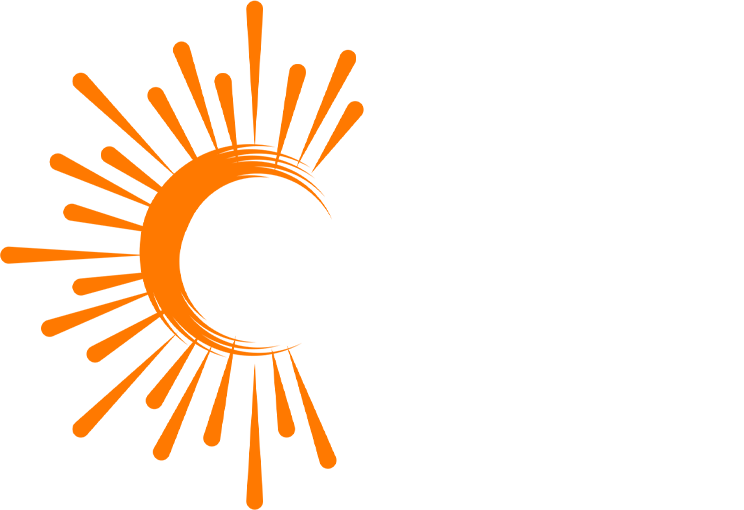Burns are injuries to the skin or other tissues caused by heat, chemicals, electricity,
sunlight, or radiation.
Call Us when you Need Help!
24/7 Support: +91 73863 61609
What Are Painless Burns?
Burns are injuries to the skin or other tissues caused by heat, chemicals, electricity,
sunlight, or radiation. While burns are often associated with intense pain, there are
cases where burns may not cause noticeable pain. Painless burns may occur when
the nerve endings in the affected area are damaged, especially in cases of severe
burns that affect the deeper layers of the skin. These burns can be dangerous, as
the lack of pain does not mean the injury is less serious
What Are the Types of Burns?
Burns are classified into three major categories based on their severity:
First-Degree Burns:
First-degree burns affect only the outermost layer of the skin
(the epidermis). They typically cause redness, mild swelling, and pain
but are not likely to be painless.
Characteristics: Redness, swelling, and dryness.
Pain Level: Generally, causes mild pain.
Second-Degree Burns:
These burns involve the epidermis and the dermis, the second
layer of the skin. They often cause blisters, swelling, and intense pain.
However, in some cases, nerve damage may result in reduced or no
pain.
Characteristics: Blisters, redness, swelling, and severe pain,
but may be painless if nerve damage occurs.
Pain Level: Severe pain unless nerve endings are affected.
Third-Degree Burns (Full-Thickness Burns):
Third-degree burns involve all layers of the skin, and they may
also affect underlying tissues such as muscles, tendons, and bones.
These burns often cause extensive damage to nerve endings, resulting
in a painless burn area
Characteristics: Charred skin, white or leathery texture, and no
pain in the burned area due to nerve damage.
Pain Level: Painless in the burned area, though the surrounding
areas may still be painful.
Fourth-Degree Burns:
These are the most severe type of burns, extending through the
skin and into deeper tissues such as muscles and bones. Like third-
degree burns, they often cause painless areas where nerve endings
have been destroyed.
Characteristics: Extensive damage to muscles, tendons, and
bones; blackened or charred appearance.
Pain Level: Painless in the burned area, but surrounding tissues
may still cause discomfort.
How Can Painless Burns Be Diagnosed?
Diagnosing painless burns involves assessing the burn's severity, the depth of skin
and tissue involvement, and the extent of nerve damage. A healthcare professional
will typically use the following diagnostic methods:
1.Physical Examination
The doctor will visually inspect the burn to determine its type
and severity. The presence of blisters, charring, or the colour of the
skin will provide important clues regarding the burn's depth.
Assessing Pain: The healthcare provider may test the
sensitivity of the burned area to assess the extent of nerve damage. A
lack of pain in a burn area can indicate severe damage, which is
characteristic of third- and fourth-degree burns.
2.Burn Depth Classification:
Burns are classified based on their depth: superficial, partial-
thickness, and full-thickness. This helps determine whether the burn is
likely to be painful or painless. Full-thickness burns (third- and fourth-
degree burns) often result in painless areas.
3.Wound Assessment
A thorough assessment of the wound will help determine
whether the burn has affected underlying tissues like muscles,
tendons, or bones. This can also help in understanding the cause of
the burn and its potential complications
4.Medical History:
The doctor will ask about the cause of the burn (e.g., fire, hot
liquids, electrical burn, etc.), as well as the patient’s medical history.
Some individuals may have conditions (like diabetes or neuropathy)
that affect sensation and may increase the risk of painless burns.
5. Imaging:
In severe cases, imaging tests like X-rays or MRI scans may be
ordered to assess damage to deeper tissues, especially if bone or
muscle involvement is suspected.
What Are the Different Treatment Options for Painless Burns?
Treatment for painless burns depends on the severity of the injury and the extent of
tissue damage. Burns that are painless are often more severe, so prompt medical
intervention is critical. Here are some treatment options:
1.First-Degree Burns (Mild Burns):
Treatment: First-degree burns are generally mild and can be
treated at home. Cooling the burn with cold (not ice-cold) water,
applying moisturizing creams like aloe vera, and taking over-the-
counter pain medications (such as ibuprofen or acetaminophen) can
help soothe the area and reduce discomfort.
Additional Care: Keep the burn clean and covered with a sterile
bandage if necessary. Avoid further irritation or exposure to sunlight.
2.Second-Degree Burns (Moderate Burns):
Treatment: Second-degree burns may require medical
attention. If the burn is large or covers a sensitive area (like the face,
hands, or genitals), it may need to be treated in a hospital setting.
Blister Management: Avoid popping blisters, as this increases
the risk of infection. If blisters are large or painful, they may be drained
by a healthcare professional under sterile conditions.
Pain Management: Painless second-degree burns may still
require pain management for the surrounding area. Prescription pain
relievers or topical numbing agents may be used.
3.Third-Degree Burns (Severe Burns)
Emergency Care: Third-degree burns require immediate
emergency medical treatment. If the burn is large, the person may
require fluid resuscitation, pain management, and wound care.
Skin Grafting: Since third-degree burns destroy both the
epidermis and dermis, skin grafting may be necessary to promote
healing and restore the appearance and function of the skin.
Infection Prevention: Painless third-degree burns can be prone
to infection due to the loss of skin integrity. Antibiotics and antiseptic
creams may be prescribed to prevent infection.
4.Fourth-Degree Burns (Very Severe Burns):
Surgical Intervention: Fourth-degree burns require extensive
surgical intervention. Often, these burns result in the loss of entire
layers of skin, muscles, and sometimes bones. Treatment may involve
debridement (removal of dead tissue), skin grafting, or reconstructive
surgery.
Rehabilitation: Long-term rehabilitation may be necessary to
restore function, especially if joints or muscles are involved. Physical
therapy is essential for improving mobility and preventing contractures
(tightening of the skin or muscles).
5.Pain Management:
Although the burn itself may be painless, the surrounding area
and the recovery process can still involve significant discomfort. Pain
relief can be achieved with oral pain medications, nerve blocks, or
other forms of anaesthesia if necessary
6.Scar Management:
Topical Treatments: Once the burn heals, scar prevention
treatments like silicone gel sheets, vitamin E, or corticosteroid creams
may help reduce scarring and improve the cosmetic appearance of the
skin.
Surgical Revisions: In some cases, further surgeries (such as
scar revisions or reconstructive surgeries) may be necessary to restore
the appearance and function of the affected area.
7.Rehabilitation and Psychosocial Support:
Recovery from severe burns, especially painless burns that may
have affected nerve endings, can be a long process. Psychological
support, including therapy for trauma or PTSD, may be required for
patients who have experienced significant injuries

Conclusion:
Painless burns, particularly those that result from third- and fourth-degree injuries,
are serious and require prompt medical attention. While the lack of pain in these
burns may seem less concerning, it can often be an indicator of severe damage to
the skin and underlying tissues. Early diagnosis, appropriate treatment, and careful
monitoring are crucial to ensure proper healing and minimize complications. Whether
the burn is minor or severe, it is important to seek medical care to prevent infections,
promote recovery, and reduce long-term physical and psychological effects.
For effective treatment of foot corns and ulcers, visit Rutvik Hospitals
today for personalized solutions to restore your foot health.
FAQs About The Service
There are many questions about the service, we have selected frequently asked questions about this service. If you do not see your answer, please contact us.
Can I know the doctors’ credentials?
Cras facilisis quam placerat massa euismod accumsan. Nulla ac neque non sapien blandit blandit Aenean malesuada porta sapien, in interdum urna commodo.
If I’m taking a companion, when can he or she travel?
Cras facilisis quam placerat massa euismod accumsan. Nulla ac neque non sapien blandit blandit Aenean malesuada porta sapien, in interdum urna commodo.
What happens if I need follow-up?
Cras facilisis quam placerat massa euismod accumsan. Nulla ac neque non sapien blandit blandit Aenean malesuada porta sapien, in interdum urna commodo.
What Does Medical Tourism Corporation charge?
Cras facilisis quam placerat massa euismod accumsan. Nulla ac neque non sapien blandit blandit Aenean malesuada porta sapien, in interdum urna commodo.
Services
- Painless Burns Treatment
- Skin Grafting Surgeries
- Foot Corns and Ulcers Treatment/
- Diabetic Foot and Nail Removal Surgery
- Abdomen Obstruction
- Anal Fistulas
- Circumcision Laser And Stapler
- Anal Fissures
- Piles Hemorrhoids
- Hysterectomy
- Gallbladder Stones
- Apendicitis Surgery
- Laproscopic Surgery
- Breast Surgery
- Thyroid Surgery
- Penal Swelling
- Cysts and Lumps
Types of Corns:
Why Choose Us?
Experience and Expertise
Pathology Analysis
Customer Focused
Honesty and Integrity
Reasonable Treatment Prices
First-Degree Burns:
Address Business
Anand Nagar, Pothinamallayya Palem, Visakhapatnam
Contact With Us
Mail Us: ruthvikhospitals@gmail.com
Call Us 24/7: 73863 61609
Call Us 24/7: 73863 61609
Working Time
Monday - Saturday: 7.00am - 19.00pm
Sunday: 8.30am - 19.30pm
Sunday: 8.30am - 19.30pm

